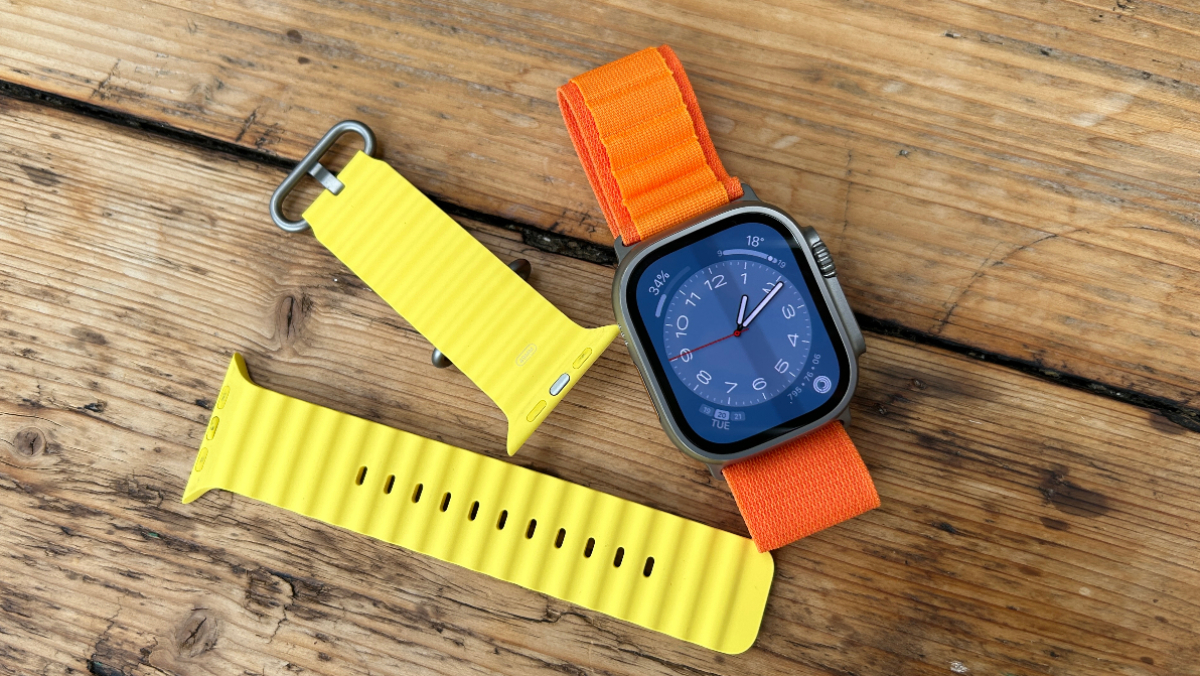Our Verdict
The Apple Watch Ultra, aided by the watchOS 9 software update, delivers an excellent experience for sporty people and its smartwatch credentials can’t be faulted. However, it’s expensive and the two-day battery life will be off-putting to many.
For
- Great design and screen
- Accurate GPS tracking
- Improved native sports tracking
- Best app store available
Against
- Limited battery life
- Twice the price of the Series 8
- Heart rate accuracy unreliable
You can trust Coach
We’ve been waiting for the Apple Watch Ultra for years, even if most of us expected it to be called the Apple Watch Pro. And, now that I’ve worn this more rugged, longer-lasting Apple Watch, I can say that it delivers in most of the ways people hoped for.
It has a longer battery life than the Apple Watch Series 8, a hardier design and an extra button that makes a big difference when wearing it to track endurance sports. The Apple Watch Ultra is one of the best smartwatches and one of the best fitness trackers, too, and even keen runners and triathletes will find that the watch satisfies most of their needs.
However, the battery life still isn’t that long and the Ultra fails to match up to the best running watches from brands like Garmin and Coros. The Garmin Epix 2 in particular is a seriously sporty rival that also has a bright AMOLED display.
Apple Watch Ultra: Price And Availability
The Apple Watch Ultra is available to buy from 23rd September and costs from $799 in the US and £849 in the UK, which is a considerable increase in price from the Apple Watch Series 8, which costs from $399/£419.
How I Tested This Watch
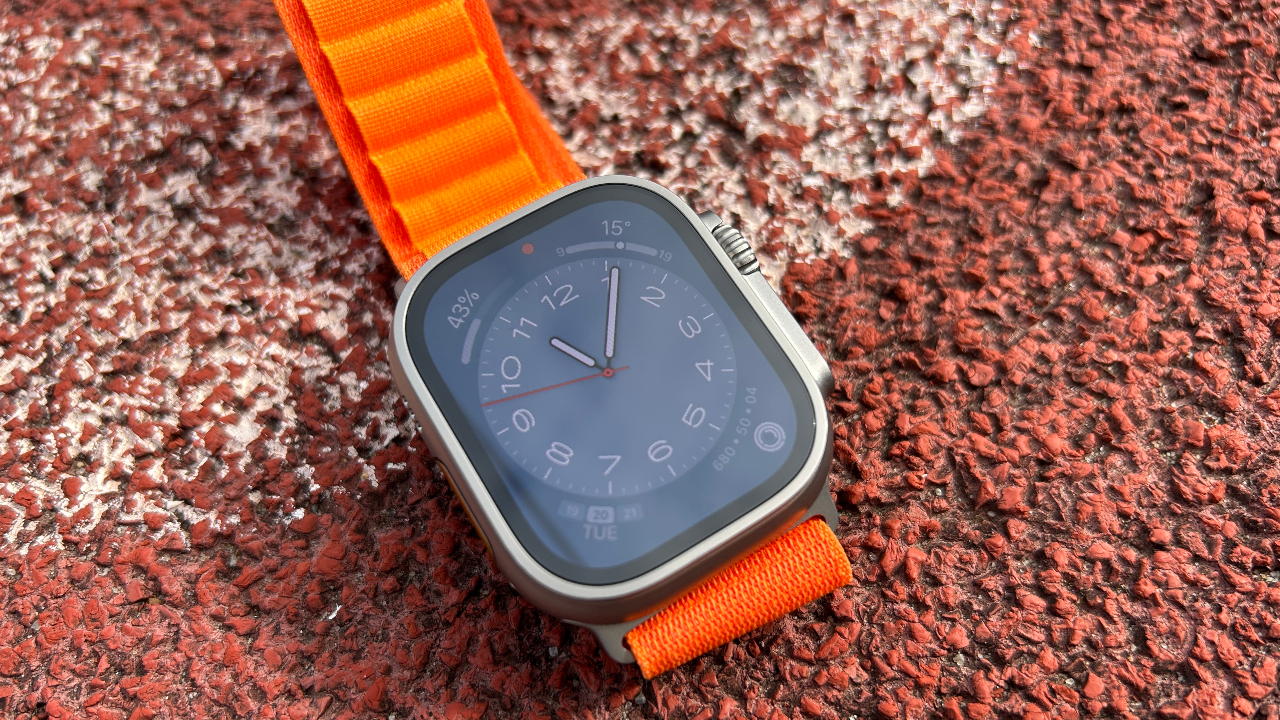
I’ve been testing the Apple Watch Ultra for around three weeks and have used it for roughly 200km of running, including the Berlin and London marathons. I’ve also used it for bike rides and yoga sessions. During this testing I’ve been wearing it alongside the Garmin Epix 2 and Apple Watch Series 8. I’ve also tested every past generation of the Apple Watch.
Design And Hardware
The Apple Watch Ultra is the largest Apple Watch yet, with a 49mm case compared to the 41mm and 45mm options on the Series 8. It also has the biggest and brightest screen yet, with the 2,000 nits (brightness measurement) retina display being double that of the Series 8.
It still feels light, and sits comfortably on my wrist, but it’s noticeably bigger than the standard Apple Watch. The titanium case also surrounds the sapphire crystal screen and covers the button and crown on the right side of the watch. It’s not as elegant as the Series 8, with its smooth, cleaner look, but it makes the watch less likely to be damaged and it remains a great-looking watch.
Sign up for workout ideas, training advice, reviews of the latest gear and more.
On the left side of the case is a new action button, which can be set to your preferred functions. I expect the most common use will be as a multifunction button that not only allows you to start and pause workouts more easily, but take laps (or segments as Apple calls them) during your activities. It’s a lap button on an Apple Watch and it's long overdue.
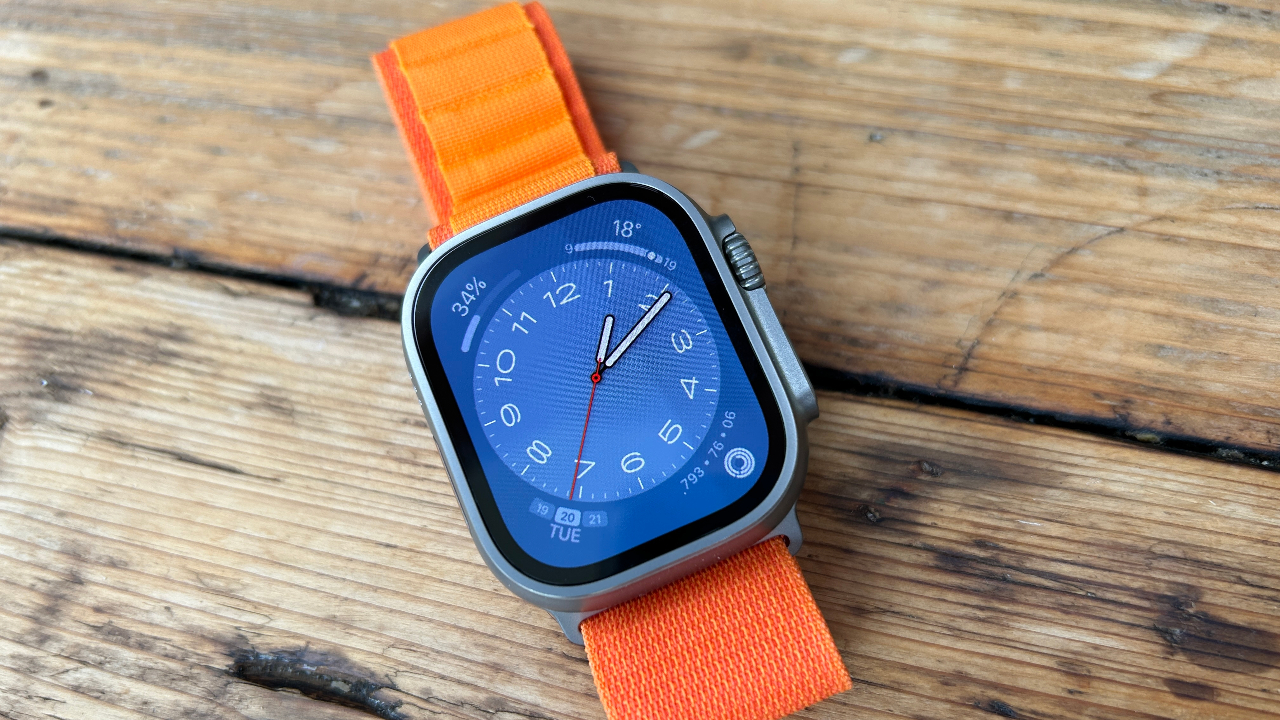
The Ultra has three microphones and two speakers. It is water resistant to 100 metres and can be used for recreational diving to depths of 40m. It has an altimeter and compass, and dual-band GPS for greater accuracy when tracking outdoor activities in difficult conditions, like under tree cover.
On the watch’s base is an optical heart rate sensor and the Ultra can also take ECG readings and track your blood oxygen saturation. A new feature is skin temperature tracking, which is done at night and records any deviations from your baseline temperature.
Apple has launched three new straps to use with the Ultra, though it can use any 44mm/45mm bands designed for the larger Series watch as well. The new trail loop is similar to the nylon sports loop, but softer and thinner and has a pull tab. The alpine loop is a fabric band that fastens with a metal hook into a loop, while the ocean band is a rubbery elastomer material. I have tried all three loops and the trail loop is the most comfortable and easiest to use, though I prefer the nylon sports loop from the standard Apple Watch.
Battery Life
The Apple Watch Ultra is advertised at lasting up to 36 hours, which is double the battery of the Series 8. It can last up to 12 hours while tracking using GPS and also has a low-power mode that extends the total battery life to 60 hours, while still offering full GPS and heart rate tracking.
I have found that Apple is conservative with its battery estimates and the Series 6 and 7 watches would easily last me more than the 18 hours listed, even when running outside for an hour or two in that period. It’s the same story with the Ultra. It has lasted me longer than 36 hours of general use, and I could reliably get two days of use from a charge when running for an hour on both days, without using low-power mode – including days when I ran a marathon.
The battery dropped about 5% per hour during my running workouts, which fits with the 12 hours of GPS. The low-power mode is a good option for some workouts, since you still get full GPS and heart rate tracking, even if you lose the always-on display and some features ilke irregular heart rate notifications. Later this year a new low-power setting will be available that takes less frequent GPS and heart rate readings during activities to extend how long the watch will be able to track you for.
The battery life on the Ultra is impressive for a full-featured smartwatch and is an improvement on the Series watches, but still falls short of what you’d get from a dedicated sports watch. The longest-lasting Garmin and Coros watches can comfortably hit three to four weeks of use and even the Garmin Epix 2 with its AMOLED screen lasts four to five days on a charge.
Sports Tracking

The native sports tracking on the Apple Watch has always been adequate for casual use. However, as an experienced runner I’ve always turned to third-party apps like WorkOutDoors to get the extra stats I need, as well as the ability to programme structured workouts and access mapping features.
The watchOS 9 updates to the Apple Watch’s sports tracking make the native Workout app suitable for keen sports people. The addition of extra data screens, new stats and sports modes, and structured workouts brings the features up to standard. The Ultra’s physical lap button is the cherry on top.
Most of the features that have been added have been par for the course on sports watches for years, including basic stats like split pace, and the ability to see stats related to your manual laps live during workouts. Some new additions are more advanced though, like running power measured from the wrist and running technique stats like ground contact time and vertical oscillation.
There is also now a multisport mode where the watch will mark your transitions between swimming, biking and running. The structured workout builder allows you to build complicated sessions beyond basic intervals and creating workouts on the watch itself is easy.
One annoyance was that I did find that it was too easy to pause a workout by pressing both the action and the other button on the watch at the same time, when only trying to hit the lap button, because of the way they are positioned opposite each other on the square watch.
I also found the running technique stats didn’t match up that well with the measurements from the Garmin HRM-Pro Plus chest strap and the graphs showing these stats in the Apple Fitness app are basic and hard to read precisely.
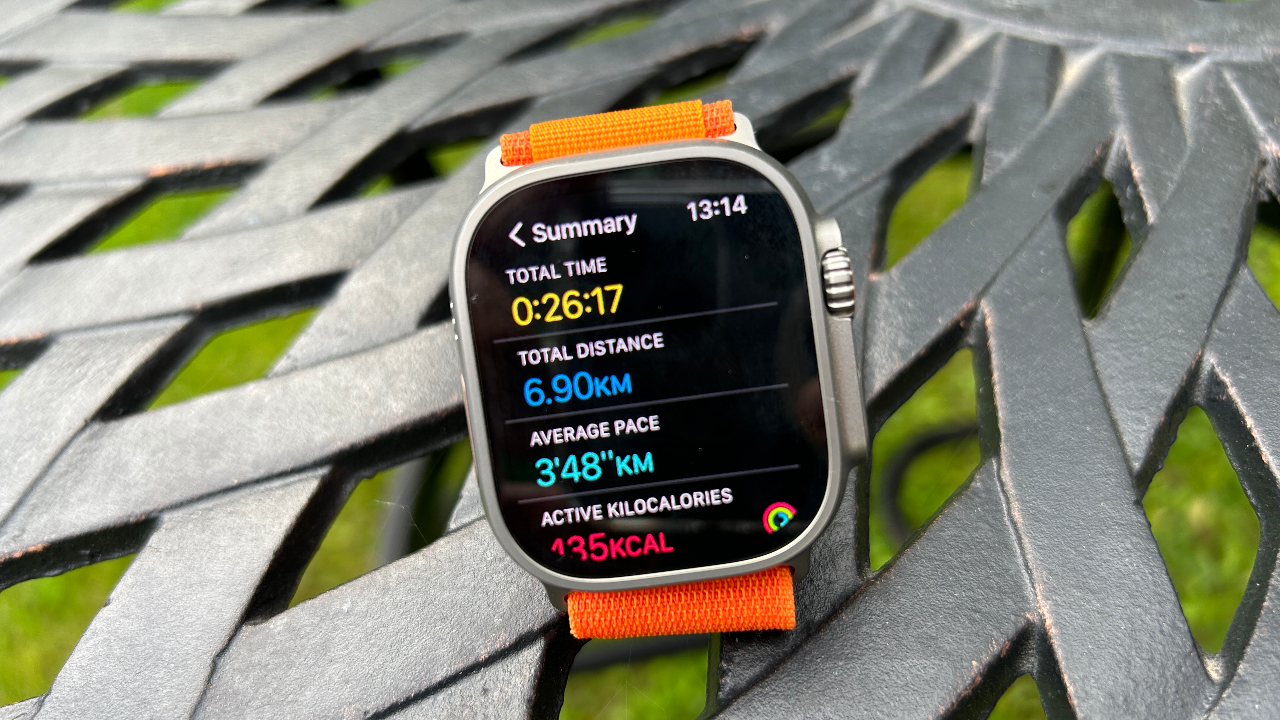
Overall, though, the Apple Watch Ultra is an excellent sports watch and far outstrips what you get from other smartwatches. It’s close to the level of a dedicated sports watch and if the battery life doesn’t bother you there’s nothing lacking here in terms of sports features – aside from the ability to connect external sensors like power meters (you can connect heart rate monitors), which will make the Ultra less useful to cyclists and triathletes.
One area where the Apple Watch Ultra still makes no attempt to compete with sports watches at its price is training analysis. There are third-party apps that can fill in the gap on the watch to some extent, like Athlytic, but there’s nothing that matches the quality of Garmin’s new training readiness feature, for example, or the training load data you get from Coros, Garmin and Polar. The Ultra is a tracker, not an analyser.
GPS And HR Accuracy
Accuracy in both GPS and heart rate has been a strong point of recent Apple Watches in my experience. On the GPS front, things only get better with the Ultra because of its dual-band tracking. I used the Ultra in tandem with the accurate Garmin Epix 2 for all my runs and bike rides and it generally produced similar stats for pacing and distance. On a running track it wasn’t as impressive as the Epix 2 in its track mode. Apple is bringing track mode to the Ultra later this year, though, initially, it will only be available in the US.
During the London Marathon, which is notoriously tricky for GPS, especially around Canary Wharf, the Apple Watch Ultra was more accurate than the Epix 2, while both were close to spot-on in the Berlin Marathon.
However, I noticed quirks with the pacing stats on the Apple Watch Ultra, where the split pace would be slow at the start of each lap. Over the course of the split it would level out and come into line with the Epix 2, but the first split of a run in particular would be hard to pace. This only happened with the native workout app lap pace stat – when using the WorkOutDoors app the problem never arose.
Unfortunately, the heart rate tracking on the Ultra has been less accurate for me, compared with the Apple Watch Series 6 and 7. It often read too high during activities compared with the measurements from a chest strap, and sometimes failed to lock onto my heart rate at all and merely greyed out that stat for long sections of a run.
This could be a case of the larger watch sitting less snugly on my wrist than the smaller, 45mm Apple Watches. Also, the alpine and ocean straps I’ve tested aren’t as easy to tighten as the old silicone bands or sports loops. Maybe the new trail loop would be better on that front.
You can connect an external heart rate monitor to the Ultra for more accurate stats and it’s worthwhile if you do use heart rate to judge your training. Our recommendations of the best heart rate monitors will help you find something suitable.
Navigation And The Compass App
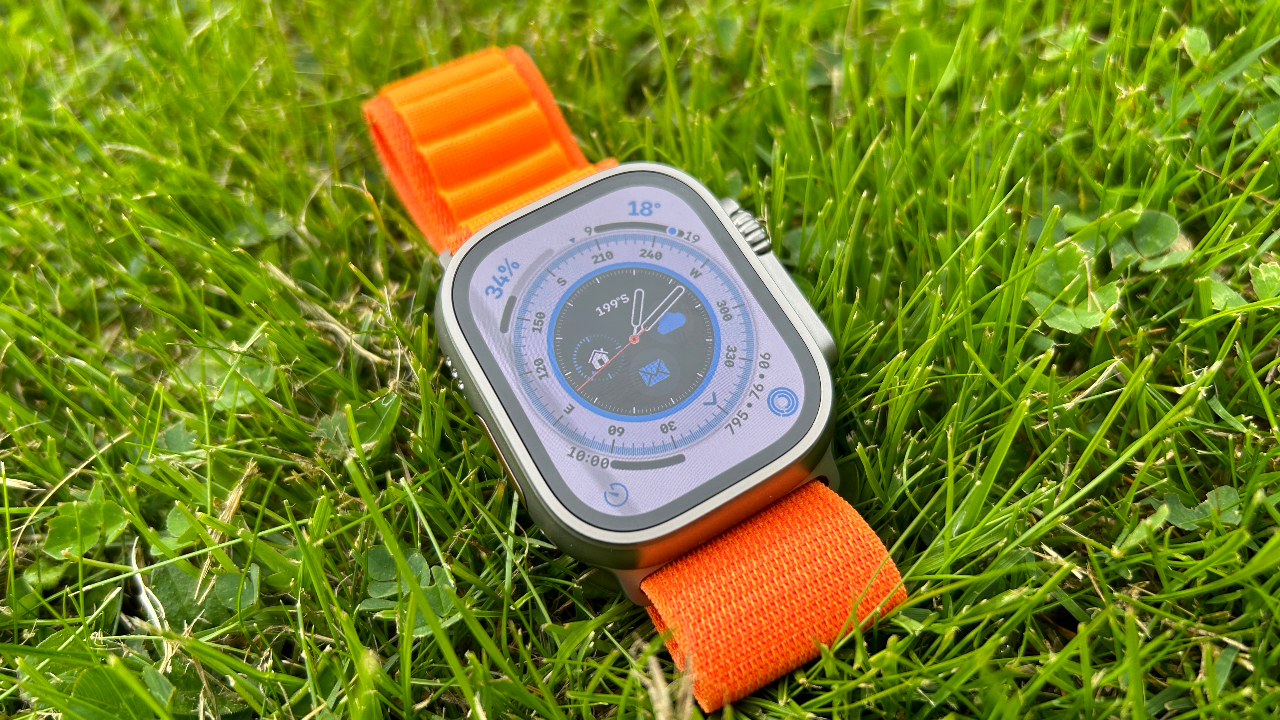
As you’d expect, the Apple Watch Ultra has the Apple Maps app and that offers useful mapping features for general life, but the upgraded Compass app expands on navigation during activities. This upgrade comes via watchOS 9, so is available on other Apple Watches as well, but with the Ultra you can access new features via the action button. This includes logging waypoints that then appear on the compass map so you can navigate to them easily.
For example, when camping you can set your tent as a waypoint, plus the nearest shop and the start of a trail you want to do. Or you can log where your car is parked so it’s easy to find it again.
For more precise routing you can use the backtrack feature. Start this and the watch will begin tracing your steps so you can follow them back to your starting point.
The features work well, in my limited testing, and are useful additions, but I’d like them to be integrated with the Workouts app on the watch – so you could see the route back to the start on a run, for example. At the moment you have to jump between the Compass and Workout app, whereas with sports watches that have breadcrumb navigation or maps, you can see the routing features on an additional screen within your workout.
You can get a map within your workout app using third-party apps like WorkOutDoors, which excels on this front with full-colour maps. But simply having the backtrack feature available as a screen within your running workout would be handy.
Health, Activity And Sleep Tracking
The activity tracking on the Ultra follows the same format as with all Apple Watches, in that you have to fill your rings each day: one for active minutes, one for active calories and one for hours active. These rings remain as addictive as ever, even if you’re a sporty person.
For the most part, the health tracking remains the same as well: with advanced features like ECG measurements and irregular heartbeat notifications available on the watch. The new feature is skin temperature tracking. This is measured at night and in the morning you can see where you are compared with your temperature baseline, which is set during the first five nights wearing the watch.
So far these measurements have tallied up with those of an Oura ring. Variations in your baseline temperature can flag up things like illness, or if you just had a heavy night on the booze. My temperature rocketed during my testing of the Ultra owing to a bout of COVID and it was useful to see each morning just how far off my baseline I was as an indication of whether my fever was coming down. However, the bigger upgrade it offers is for women’s health tracking, promising greater accuracy in tracking the menstrual cycle and ovulation.
The temperature sensing is another reason to wear the Ultra at night, which is welcome because otherwise the sleep tracking is still basic. It tracks total time asleep and provides a sleep stage graph with time in REM, core and deep sleep, but overall the Apple Watch still lags well behind the depth of sleep insights offered by the likes of Fitbit, Huawei and Polar in particular.
Is The Apple Watch Ultra Worth It?
The Apple Watch Ultra is the best Apple Watch I’ve tested and the best smartwatch for sporty people available. The upgrades in design over the Apple Watch Series 8 are useful, with the action button being particularly handy, but it’s the software updates from watchOS 9 that improve the sports tracking experience across the Apple Watch range in general.
It’s tricky to say whether the Ultra is worth the additional outlay over the Series 8. As a keen runner, the Ultra’s extra battery life, larger and brighter screen, and action button all contribute to a significantly improved experience over a Series watch. However, it’s double the price and with watchOS 9 on board the Series 8 will still offer a terrific sports tracking experience, and charging every day instead of every two days is not the greatest hardship given the saving you make.
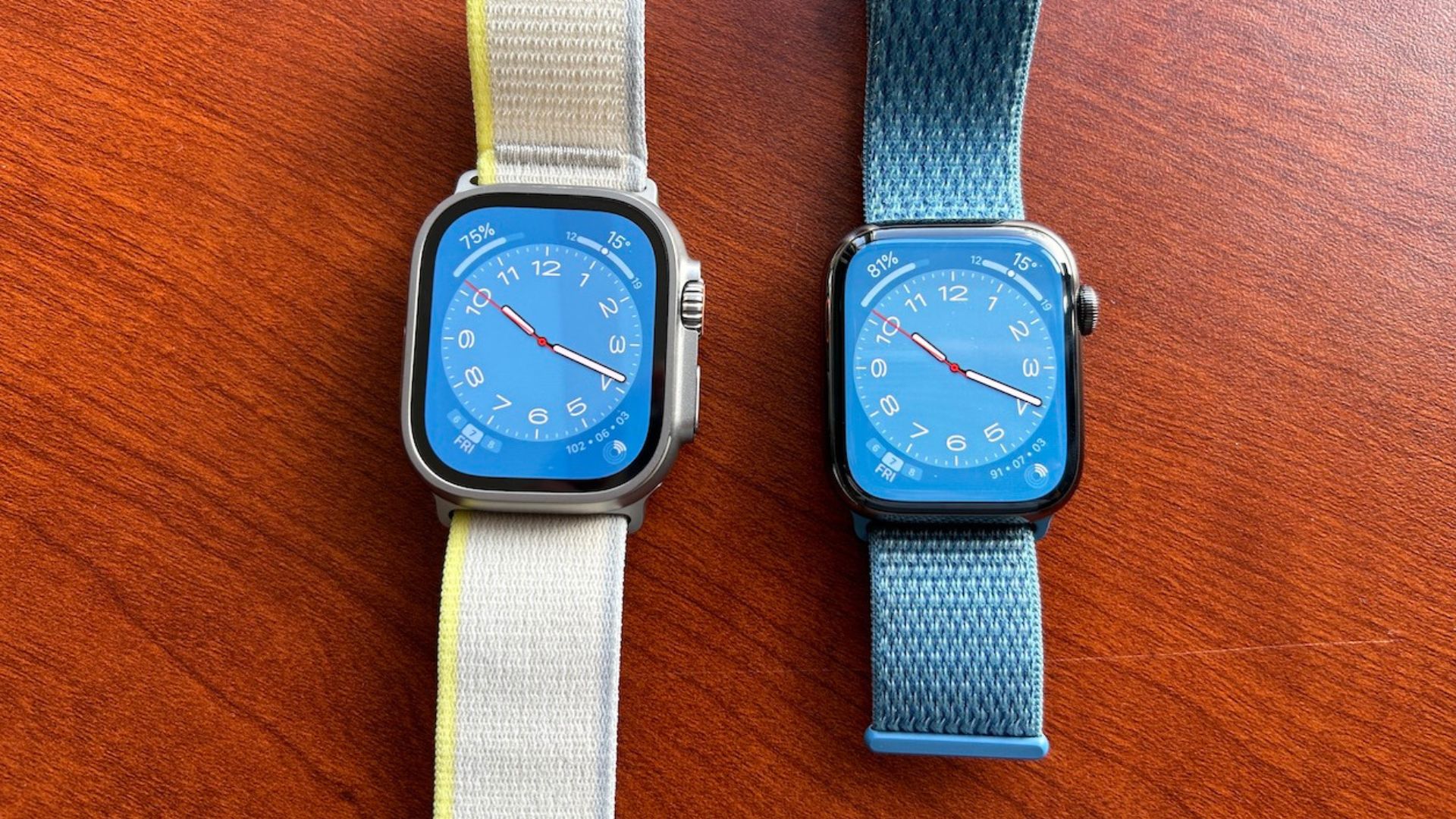
Sterner competition comes from sports brands, and Garmin in particular. The Garmin Epix 2 sapphire edition is $999.99/£899.99 and it is still a superior sports watch that has a bright AMOLED screen, even if the Ultra has a smaller, more attractive design overall. You can also get a Garmin Fenix 7 or Forerunner 955 for less than the Ultra and get a lot more battery life and better sports tracking, plus some smart features.
For the audience that wants an Apple Watch for the design and smarts, but doesn’t want to lose out too much on sports tracking capabilities, the Ultra is a dream. For those who mainly want great sports tracking and a few key smart features like music storage, there is better value in the Garmin range.

Nick Harris-Fry is a journalist who has been covering health and fitness since 2015. Nick is an avid runner, covering 70-110km a week, which gives him ample opportunity to test a wide range of running shoes and running gear. He is also the chief tester for fitness trackers and running watches, treadmills and exercise bikes, and workout headphones.
